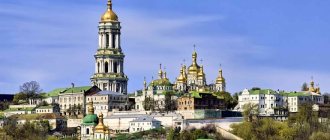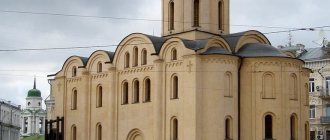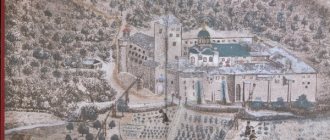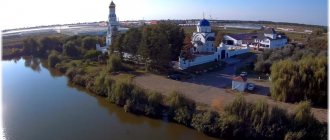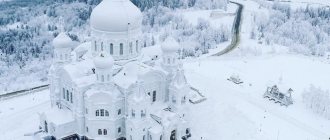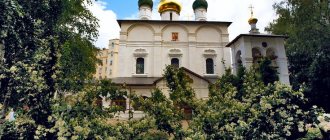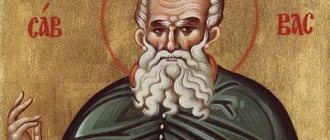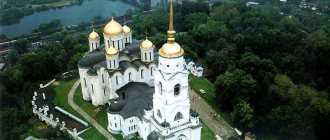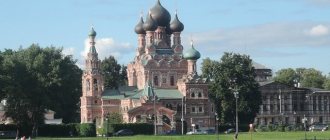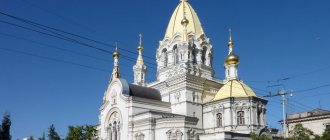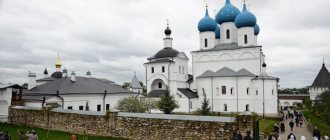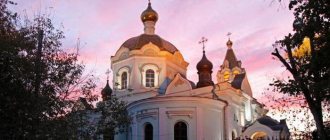High in the rocky gorges of Troodos, in the west of the island of Cyprus, the rich monastery of Kykkos is located. Real miracles happen there. The history of the abbey is filled with incredible incidents. In the holy place there is a world legend - the Kykkos Icon of the Mother of God.
The honoring of the Divine Kykkos image is held on December 26 (January 8, new style). The image of the Heavenly Queen is carefully preserved in the imperial monastery erected in her honor.
According to the most ancient legend, the Kykkos Icon of the Mother of God was created by the Apostle Luke during the earthly existence of the Virgin Mary. She personally blessed this shrine.
In the world of Christianity, there are three types of images of the Mother of God: “Eleusa” (“Merciful”), “Oranta” (“Offering Prayers”) and “Hodegetria” (“Guiding the Path”).
The Kykkos legendary icon of the Mother of God, kept in Cyprus, refers to “Eleusa”. The difference is that the faces of the saints in the image touch. This symbolizes boundless love for all living things on earth.
It is here, in the Kykkos monastery in Cyprus, that a wonderful icon is kept
History of the Kykkos Monastery in Cyprus
Each word of the long name of the monastery has a specific meaning. There is no need to talk about holiness; any Christian church is imbued with prayer, faith and light. According to legend, the Lord God commanded the hermit Isaiah to bring to Cyprus from Constantinople the icon of the Mother of God, painted by the prophet Luke, during her lifetime.
Through sincere prayers for the healing of those in power, the Byzantine governor and the emperor's daughter regained health. In gratitude, Alexei Komnenos, the ruler of Byzantium, gave away the shrine, making a copy of it. With the money allocated by him, a monastery was founded, which received royal status. The building was intended to store the icon of the Mother of God.
Copy of the Kykkos Icon of the Mother of God. The Kykkos Monastery in Cyprus was founded to house the original relic.
Stavropegial - means free, independent control in the church hierarchy, the guarantee of power is the cross on the foundation stone. The name of the Kykkos monastery is interpreted in two ways: either in honor of a bird, or by the name of a shrub growing in the area.
The first structure erected was wooden. The roof was topped off with a steep gable roof of flat, red, lapped tiles. The first fire in 1365 prompted the replacement of some wooden structures with stone ones. The fire of 1541 destroyed the monastery, and a stone building was rebuilt in its place. In 1745, the monastic church was expanded, rebuilding it from a single-nave to a three-nave.
The middle one remained for the Mother of God, the right one - in honor of All Saints, the left one - in honor of the archangels Michael and Gabriel. Over the next three thousand years, fires and destruction occurred repeatedly, but the monastery was restored and gained strength. The last time a disaster touched the walls of the church was in 1831; the elements swallowed up many valuable things.
Only one shrine - the icon of the Mother of God - survived all the trials and remained untouched.
The growth, welfare and prosperity of the monastery have always occurred through donations. An interesting fact is that during Ottoman rule, the decline of a Christian temple was considered unacceptable. Considerable funds were allocated to the monastery by the country's authorities. The buildings of today's monastery date back to 1745. During the Ottoman Empire, Christian bells were prohibited from ringing.
Therefore, the bell tower was built only in 1882, after the restrictions were lifted by the British authorities. 6 bells were raised to the belfry, the largest of which was a gift from Tsarist Russia. The weight of the hero was 1280 kg, it has a dedicatory inscription from Moscow resident Ekaterina Abramova, and the bell was cast at the Bogdanov factory.
The Kykkos Monastery in 1926 became the place where Macarius (Mouskos), the first president of Cyprus, began serving the Lord and faith. His grave is located 2 km from the walls of the monastery.
A significant step in the cause of Christian education was the opening of the Research Center of the Kykkos Monastery, with an archive and library, in 1986. The temple museum began its work in 1995. The Patriarch of Moscow and All Rus' Kirill visited the shrine of Cyprus in 2012.
The miraculous icon of the Mother of God of Eleus
According to legend, the icon was painted by the Evangelist Luke from the Virgin Mary and at her request. That is why there is such reverent respect for her. Not only Orthodox Christians, but also non-Orthodox Christians turn to the Mother of God with their troubles. Through her intercession, rain is sent in times of drought, the weak and sick are healed, and the childless give birth to children. No wonder she is called Our Lady of Eleusa, which means “Merciful.” The inexhaustible mercy of the intercessor of all those who suffer, the comforter of the saddened.
Visitors to the monastery are interested in why the icon of the Mother of God cannot be seen. There is a belief that the power of the icon is such that whoever sees it can go blind. Therefore, for some time it has been covered with a silver frame decorated with gold, repeating the image. It was last changed in 1795. A veil decorated with jewels is thrown over it.
Interesting: Red Army. Soviet-Chinese conflict on the Chinese Eastern Railway in 1929
There are two main features of the icon that are characteristic of the Kykkos image. It depicts the Virgin Mary with a baby on her right hand, who is depicted in an unusual position. Looking at him, you might think that Jesus is trying to escape from the hands of his mother, and she is holding him back, trying to protect him from future trials. Another feature of the icon is the two veils on the head of the Virgin Mary. One is red, the other is black.
Architecture of the Kykkos Monastery in Cyprus
The founder of the monastery near the Troodos mountain system was the Byzantine ruler Alexei Komnenos. Today, the buildings of the monastery that have survived through the centuries belong to different historical eras. They were erected as needed.
The buildings are located along the perimeter of two different-level courtyards:
- monastery church;
- the cells of the brethren;
- reception rooms;
- cathedral room;
- the rector's house;
- museum;
- library.
The small cozy courtyard of the eastern part of the monastery is paved with stone, and there is a well in the middle. The walls of the buildings were erected from local cheap building material - untreated stone. The ceilings are gable with concrete tiles. The interior walls are framed by arched portals. The main monastery church is located in this part. Architectural style: domed basilica.
Rows of columns support pointed arches, the interior space is divided into three limits. The entrance to the building is decorated with three portals with semicircular arches and wall mosaics that give off a golden glow. On both sides of the catholicon, on the first floor there are the cells of the brethren, on the second - the abbot's chambers. The buildings are decorated with wood carvings.
The door to the abbot's chambers, dating from the 16th century, deserves special attention. Fine openwork carving reproduces natural motifs in combination with an allegorical picture of the World Tree, the triumph of Christ, the symbol of wisdom - the dragon, and the guardian of the monastery - a lion sleeping with open eyes.
Through the upper galleries you can enter the courtyard of the northern part of the monastery. Here is the Church and Archaeological Museum, with exhibits of church art, utensils, and antiques. The wooden entrance doors are decorated with hand-drawn scenes from the Gospel. On the territory there are premises for guests where you can find shelter and accommodation.
The architectural ensemble is completed by an elegant bell tower from the 19th century. A new belfry was erected slightly to the west of the territory. Its domes are decorated with crosses floating above untouched forests, symbols of the triumph of faith.
The Kykkos Monastery in Cyprus has now been restored. The entrances, walls, corridors of courtyards, galleries are decorated with miniatures of historical subjects of Christianity and the formation of the monastery. The paintings are of modern origin, made in 1984-1986 by applying smalt to a gold field.
Up the mountain there was a monastery chapel with an image of the Kykkos Mother of God, laid out in mosaics. During a drought, a miraculous icon with a prayer for rain is brought here in a religious procession. The first President of Cyprus, His Beatitude Archbishop Makarios III, is buried near the chapel. A 10-meter bronze statue was installed at the burial site.
Don't miss the most popular article in the section: The best ski resorts in Azerbaijan.
More about the monastery complex
Kykkos is located among pine trees, on the Troodos slopes. The modern monastery complex is very different from the original buildings. Initially, all buildings were wooden. After the first fire, of which there were 4, wood and stones were used in construction.
It is significant that during the fourth fire, the icon of the Most Holy Mother of God, which has miraculous powers, was not damaged. The Monastery of the Holy Virgin Kykkos is visited by pilgrims and vacationers asking the shrine for healing and help.
The modern monastery complex includes buildings located on two levels:
- To the north is the main temple, and to the south are the cell buildings on the lower level.
- Upstairs there is a library and a refectory.
- There is a well in the stone-lined yard.
- A museum was built on the north side at a height.
Interior of the Kykkos Monastery in Cyprus
The main church of the monastery was previously completely painted with frescoes, but during the fires very little of its former beauty remained in the altar part. The decoration of the interior space today represents luxury and piety. The stone floor slabs are laid using the Florentine method, have no joints or seams, and are decorated with mosaics. The walls are painted with images of saints and rare scenes of Christian themes.
The dome is painted with the image of Jesus Christ surrounded by 12 apostles. Huge chandeliers hang from the ceiling, and there is an openwork pulpit in front of the iconostasis. The high pulpit is the place of Christ’s preaching and his ascension to the pinnacle of his feat for the salvation of mankind.
The pulpit is ancient, made in the form of a faceted cup with the image of four Evangelists and an eagle with its wings spread for flight, a divine symbol of inspiration, strength and Resurrection. Everything is covered in gold; when illuminated, it sparkles and refracts along its edges.
The Kykkos monastery in Cyprus has its own traditions. It is customary to sit in the temple during the service, which corresponds to the episode from the Bible when the disciples of Jesus listened to the word of God during the Last Supper, sitting at the table. Comfortable high wooden chairs are equipped with two positions: low and high. Using one of them you can sit, the other - you can stand, leaning on the armrests of the chair.
The most significant place of any temple is the iconostasis. Massive carving, made in 1755, in three tiers. Ancient icons of the 16th – 19th centuries, the Kykkos icon of the Mother of God in a gilded lace frame is installed in the center of the iconostasis, the third from the royal doors. An interesting unusual fresco of significant size is located in the altar space.
It depicts a throne with the Mother of God and the adult Christ sitting on it in royal robes. The face of Jesus is framed by long hair and a crown above his head. There are angels around the holy images. Bright tones of red, blue, gold, and traced patterns emphasize the joy of life and the greatness of faith.
One more room deserves a detailed description - this is the museum. The word “royal” is applicable to it, as well as to the monastery itself. The floors in the exhibition halls are decorated with marble and granite of various colors, the ceilings are inlaid with walnut wood with carvings and gilding. Stone bas-reliefs and subject paintings are made with marble mosaics.
The dominant color is purple - a symbol of spirituality. Dim lighting and muted Byzantine music add to the feeling of another era. The exhibits were carefully collected by the monastic brethren over several centuries. The abundance of objects made of gold, silver, ivory, natural silk, pearls and precious stones testify to the glory and greatness of the monastery.
Items of church utensils are represented by a collection of lamps, candlesticks, padadadils, and crosses. No less valuable are exhibits of human spirituality: books, geographical maps, engravings, icons, manuscripts.
There is a restoration workshop in the monastery, whose specialists were able to preserve and restore the historical riches of bygone eras. In the lobby of the museum there is a shop where you can buy books, slides, and copies of famous exhibits as souvenirs.
Shrines of the Kykkos Monastery in Cyprus
The Kykkos Monastery in Cyprus was built to store the miraculous icon of the Mother of God of Kykkos (Theotokos of Eleusa - “merciful”), and it is still located here today. According to legend, this is one of three icons painted by the Apostle Luke. The upper part of the image is hidden from human eyes by a velvet canopy. Emperor Alexei Komnenos gave the icon to the hermit with great regret.
Covering the image with a veil, he made it clear that if he could not admire the shrine, then no one would see it. There are other versions: the energy emanating from the image can blind a person, as well as the poor condition of the icon.
In 1576, the shrine was covered with a gilded silver frame trimmed with tortoiseshells and inlaid with mother-of-pearl.
In the temple there is an icon of the Mother of God of Delight and Consolation copied from the original. The shrine itself has been kept for several centuries in a monastery on Mount Athos.
After the list began to flow myrrh on the day of the icon’s celebration in 1997, thousands of pilgrims flocked to it.
In one of the visiting halls there is a repository for pieces of the incorruptible relics of saints.
The icon cases contain the remains of St. Luke, Nicholas the Wonderworker, John the Baptist, St. George the Victorious, Apostle Philip, Matrona of Moscow, Spyridon of Trimythous and a dozen other saints.
The collection is considered rare and the largest in the Christian world. To gain access to the relics, you just need to ask the monk on duty, and he will take you into the hall; they don’t take money here.
What to see along the way
The journey from Polis itself can become a colorful memory, because during the 60 km one-way trip you can see several more picturesque places in Cyprus.
If the departure point is Polis or Protaras, the following attractions are available:
- The village of Lysos. It has a beautiful church and fountain that represent the culture and spirit of Cyprus.
- Cedar Forest and Chapel of the Holy Cross. Stopping and taking a walk through the cedar forest is a good solution for those who want to breathe fresh air and admire the beauty of the trees.
- Folklore museum. Located in Nicosia, it will delight poetry lovers. It contains classic poems and books in authentic centuries-old bindings. At set hours, poetry readings are held in the authors’ language.
If the departure point is Limassol or Paphos, you will see the following:
- Village of Platres. It has good cafes that serve delicious lunches. In addition, you can see a waterfall coming down from the mountains.
- Kakopetria is a charming village on the way to the monastery. It is located on a cliff. The streets are paved with stone. The cozy atmosphere and friendly residents will delight and surprise all travelers. After visiting, you will be left with a pleasant aftertaste; the views make you think about life.
Village of Kakopetria.
Another favorite place for tourists is Archangelos Michael Church - a church in Crete.
But to visit it, you should plan more time on your trip, since the path to it will also allow you to get acquainted with many attractions.
Interesting facts and legends
There are many stories and events that are attributed to the action of the icon of the Mother of God:
- The monastery contains part of the tongue of a huge swordfish, which in 1720 tried to sink a ship with pilgrims. The power of the intercessor of the Mother of God helped people escape and reach the shore.
- Near the holy image in the temple there is a cast of the withered hand of a wicked man who tried to desecrate the icon.
- Every year the veil is removed from the face, the icon turns its face to the sky and rises to the chapel on the mountain; everyone firmly believes that this ritual brings the long-awaited rain.
- The healing power of the image of the Mother of God helps to get rid of various diseases, and women to conceive a child.
- During epidemics and natural disasters, the removal of icons to surrounding settlements prevented inevitable misfortunes.
In ancient Russian chronicles there is a description of the fact of desecration of the icon. The Arab shot an arrow at the icon, real blood flowed from the wound, the attacker ran home in fear, but death overtook him on the threshold.
Reviews from tourists
Reviews can be divided into two groups:
- The vast majority are positive. Those who visited the monastery share their impressions, feelings from touching the ancient shrines of Orthodoxy, the beauty and well-groomed nature of the monastery, and the splendor of the local nature.
- Negative reviews relate to everyday issues, the difficult serpentine climb, which makes you feel sick, as well as the short duration of the excursions.
The purest mountain air, the most beautiful places, the monastery complex, the miraculous icon affect a person in an inexplicable way, leaving no one indifferent.
How to get to the Kykkos Monastery by car or public transport
You can purchase excursions to Kykkos at any travel agency in Cyprus. They are often complex, which involves visiting other attractions of the island. By renting a car and becoming free to move, you can get to your destination cheaply and comfortably. Travel time without stops will take 2 hours. The route is wide, provided with passing roads and parking lots, but in the form of a mountain serpentine.
Traveling from Limassol, you should take the road signposted B8, get to the town of Psilo Dendro, turn left at the 3rd intersection, and then right. Once you reach Prodromos, continue your journey following the sign for Kykkos.
There is no public transport to the monastery. From any place you can take a regular bus to the village of Pedoulas, walk the rest of the 5 km distance, or take a taxi.
Where is Kykkos?
The monastery is located in Cyprus, in Troodos, at an altitude of more than 1200 meters. The monastic compound was erected in the west of the Troodos chain, 18 kilometers from the highest mountain - Olympos.
Before driving on your own, it’s worth looking at the map. Although it will not be difficult to find the way, since there are signs in English, which is accessible to many visitors.
Hotels near the Kykkos Monastery in Cyprus
For a comfortable stay and convenient visit to the Kykkos monastery, you can stay in hotels and apartments located in the immediate vicinity.
| Address | Name | Services | Price of accommodation | Distance from the monastery |
| Moutoulass village | Galaria House | Fireplace, patio. Sleeping places, linen. Features a living room, dining area, kitchen with dishwasher, and free Wi-Fi. The windows offer beautiful views of the mountains. The nearest airport is in Patho, 45 km away. | Cost for two 3645 rub. per night. | 7.5 km |
| Village of Tris-Eliese | Holiday Homes Love Holiday House | Air conditioning, the kitchen has an oven, microwave, dishwasher, coffee machine. Bed linen, towels and Wi-Fi. Terrace overlooking Troodos Mountain, swimming pool, parking space for cars. The distance to the city of Limassol is 50 km, Paphos is 40 km. Activities in the surrounding area include skiing and horse riding. | 6196 rub. couple's accommodation per night | 7.4 km |
| Village of Kalopanagiotis | Apartments | Terrace, kitchenette, free WiFi. There is a balcony, bath, TV, microwave, toaster and kettle, and the nearest village is 24 km away. | Night for two - 4374 rub. | 8 kilometers |
| Lemifu village | Themis House Hotel | Studio with balcony, internet, satellite TV, kitchenette. There is free parking on site and an outdoor swimming pool in the garden. | The cost of the room is 2916 rubles. per day | 25 minutes walk |
Coming to Cyprus, one cannot help but visit this marvelous corner of nature and the Christian religion. The Kykkos Monastery is the most famous and significant of all those located on the island. For the sake of healing and receiving God's mercy, people of all religions and denominations come here.
Author: Marie Arkhipova
Article design: Oleg Lozinsky
